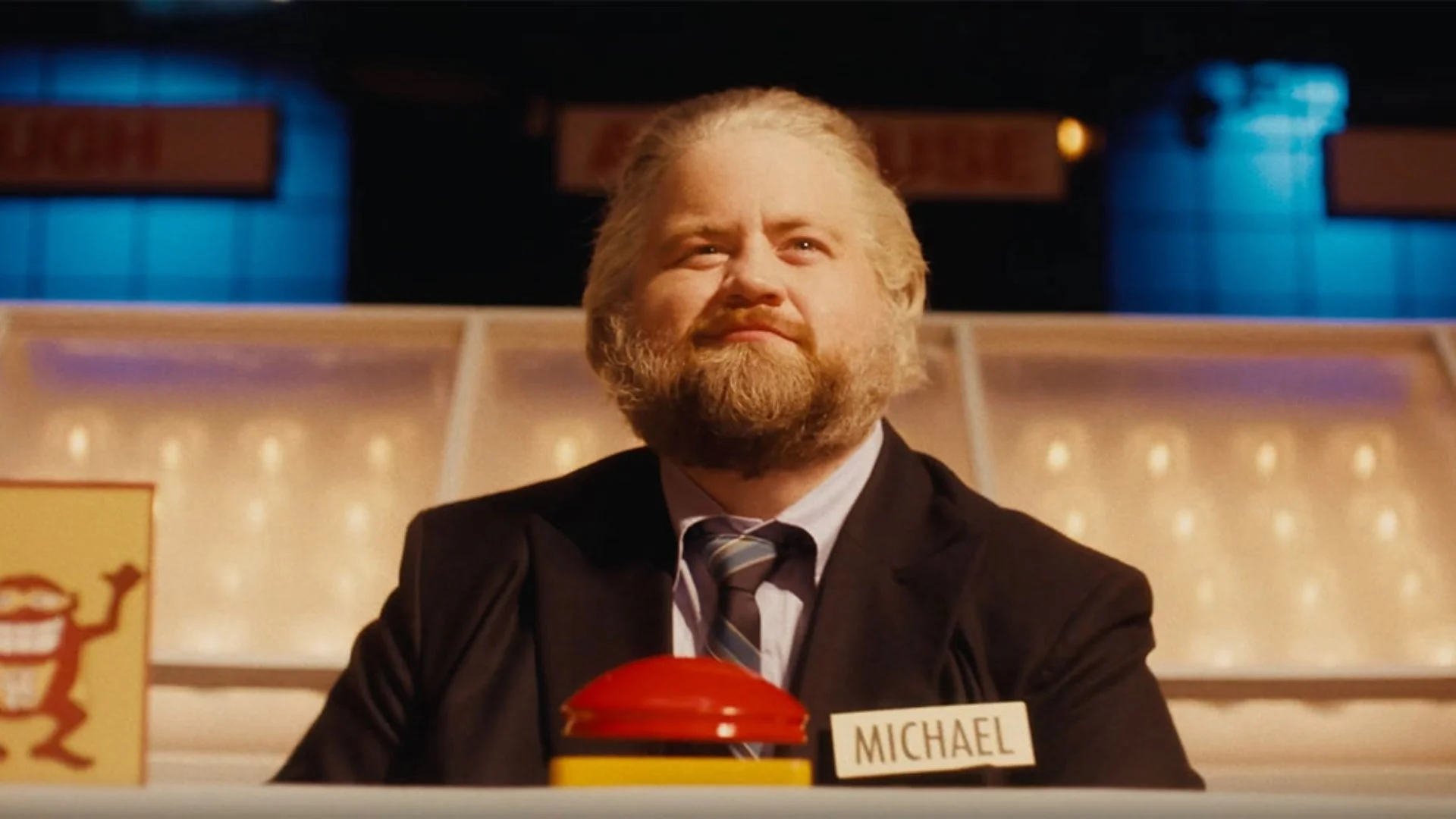‘The Luckiest Man in America’ Review: Paul Walter Hauser Serves Another Winning Weirdo Performance in Subpar Game Show Bio Drama
As a child, I watched reruns of the original Press Your Luck on GSN (Game Show Network) with my grandmother. Granted, I preferred the 2002 Whammy reboot because it reminded me of Crash Bandicoot. Anywho, it was such a fun series. So imagine my shock when learning that the game could've been easily hacked like a Nintendo Wii or DS in Samir Oliveros' solid – but surface-level – The Luckiest Man in America, which recounts the fateful day in 1984 when one sleazy guy with immaculate memory skills took the CBS staff of Press Your Luck for a ride.
Image credit: Courtesy of TIFF
NR
Runtime: 1 Hr and 30 Minutes
Production Companies: Plenty Good, Fabula
Distributor: N/A
Director: Samir Oliveros
Writers: Samir Oliveros, Maggie Briggs
Cast: Paul Walter Hauser, Walton Goggins, David Strathairn, Maisie Williams, Haley Bennett, Shamier Anderson, David Rysdahl, Johnny Knoxville, Brian Geraghty, Patti Harrison, Shaunette Renée Wilson, James Wolk
Release Date: N/A
Summer, 1984. Ice cream driver Michael Larson (Paul Walter Hauser) travels from Ohio to the CBS station in Los Angeles, hoping to get on his favorite game show, Press Your Luck. He manipulates his way into the eyes of the show's creator, Bill Carruthers (David Strathairn), and does an impromptu audition. While casting director Chuck (Shamier Anderson) sees a sketchy loser, Carruthers sees a star [to exploit] and personally invites him to play the game in a live taping the following day.
The next day, Larson arrives on set, joining Ed (Brian Geraghty) and Janine (Patti Harrison). It takes no time for everyone – from the tour guide Sylvia (Maisie Williams) to show host Peter Tomarken (Walton Goggins) – to see how strange he is with his awkward responses and lack of media training. He doesn't crack a smile and drops f-bombs on camera. But when Larson starts playing the game and spinning the wheel, he goes on a hot streak with no end in sight, to the dismay of the producers. As it turns out, Larson has studied the game's pattern, of which there were five. It soon becomes a game of sabotage as the network executives and staff find dirt on their new weirdo champion and give him a whammy of his own.

Do you ever think Paul Walter Hauser's career has been dictated by the song “Creep” by Radiohead? Since I, Tonya, Hauser has been portraying creeps and weirdos that make you wonder, "What the hell is he doing here?" It's so frustrating to see him continue to box his talents, but damn it, he's so good at it. As Michael Larson, Hauser does what he does best. He gazes upon people with beady eyes, is hesitant in his responses, and has discomforting body movements such as lip-smacking and using a handgrip at every moment that sells you on Larson's mysterious persona. The writers also attempt to humanize Larson by showing him trying to contact his family back home. When it gets to those emotional points, Hauser renders Larson's empathy well, even if the writing for his character doesn't emotionally land.
The production design and set decorators do a stellar job replicating the Press Your Luck set, making it feel like you’re stepping onto the stage alongside Larson and watching a BTS look at how it was made.

For a stranger-than-fiction tale, director Samir Oliveros approaches the subject with a sanitized straightforwardness that leaves much more to be desired. Since the story is a cautionary tale about an average American man going up against the entertainment industry bigwigs, there are plenty of opportunities to offer a worthwhile dissertation about commercialism, the American Dream, or redemption. However, the film only briefly touches upon those topics as Oliveros is focused on nailing the details from the set day and capturing the mayhem behind the scenes that he doesn't bother to add meaningful substance or fully explore its themes.
Larson is a fascinating figure. He had several arrests before his TV appearance, had been a part of several Ponzi schemes, and had several baby mamas. As the script unravels details about his past, Oliveros and co-writer Maggie Briggs frustratingly state – but not explore – said background, which could've added more dimension to his portrayal.
As you can tell by now, The Luckiest Man in America is fairly simplistic. While entertaining, it's a shame the story refuses to strive for greater ambitions. That also extends to Oliveros' direction. It has all the necessary components to settle into the madness but doesn't take full advantage to heighten the stressful atmosphere.
The Luckiest Man in America has elements of Late Night with the Devil's style as it features one scene of Larson running out of the CBS station after they pull up his receipts. It eases into psychological drama territory with Larson on a talk show set with the host (Johnny Knoxville) already expecting him. Shortly after, it abandons that idea, and it's even more aggravating when the scene ends.

The Luckiest Man in America delivers a strong performance from Paul Walter Hauser, but the film's hollow approach to the Michael Larson story is wasted potential. It's another case of a "based on true events" movie that desperately needed to press its luck in its ambitiousness to be memorable.
Rating: 2.5/5


